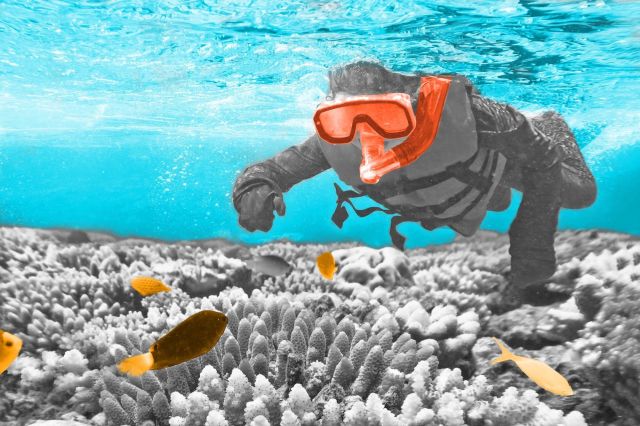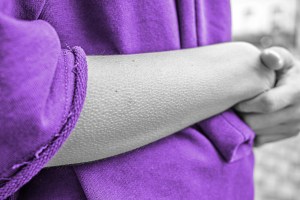
The Great Barrier Reef Isn’t a Single Reef
The Great Barrier Reef extends for 1,429 miles along the coast of Queensland, Australia, and according to the National Oceanic and Atmospheric Administration (NOAA), it’s the largest living structure on Earth. But that figure disguises the fact that the Great Barrier Reef comprises about 2,500 to 3,000 separate but interconnected smaller reefs, as well as over 900 coral or sand islands known as cays. There are also different types of reef. The term “barrier reef” refers to a type of reef that forms on the outer edges of the continental shelf, separated from land by a deep lagoon. Fringing reefs are closer to the shoreline and tend to form near islands. Platform and patch reefs are small and isolated, while ribbon reefs are long and narrow and lack a lagoon.

It’s Home to 600 Species of Coral
The Great Barrier Reef isn’t just home to coral — it’s made of it. Approximately three-quarters of the world’s coral species can be found here. There are two main types, hard coral and soft coral. It is the hard or stony corals (scleractinians) that are responsible for creating the reef itself. Made up of tiny polyps, each stony coral measures around one-tenth of an inch, but they band together to form colonies that consist of millions of individual polyps. The coral secretes calcium carbonate, which grows over the limestone remains of previous colonies. This slow and steady growth — less than two inches per year if conditions are ideal — eventually formed the structure of the Great Barrier Reef. The coral is precious, which is why visitors should never be tempted to break off a piece as a souvenir, no matter how small and insignificant it might seem.

The Reef Is the Most Biodiverse UNESCO World Heritage Site on Earth
Aside from the coral itself, the Great Barrier Reef is home to more than 1,500 species of fish. Perhaps the most curious is a scorpion fish called the Rhinopias agriloba. Occasionally found in the northern part of the reef, it appears to walk along the seafloor balancing on its fins. Approximately 4,000 species of mollusks and about 240 species of birds also live in the reef’s ecosystem. On top of this extraordinary roll call, you’ll find migrating whales, dolphins, dugongs, sea turtles, crustaceans, sponges, anemones, and other marine life, making the reef the most biodiverse UNESCO World Heritage Site in the world. Humans, too, are intrinsically linked to the reef: The Aboriginal and Torres Strait Islander peoples have forged a strong connection with the reef during their 60,000-year history, as evidenced by shell deposits, fish traps, and marine totems.
More Interesting Reads

Some Reef Dwellers Should Be Feared More Than Others
Snorkelers and divers at the Great Barrier Reef should familiarize themselves with some of its more dangerous inhabitants. The reef is home to 14 species of sea snakes, and some are more poisonous than any found on land. The venomous blue-ringed octopus should also be avoided. The octopus tucks itself into shells and won’t attack unless provoked, but a bite is usually fatal. Some types of jellyfish are another potential hazard. Species like the Carukia barnesi are known to cause Irukandji syndrome, which can result in severe lower back pain and muscle cramps. Meanwhile, the crown-of-thorns starfish can devastate the coral itself. It feeds on the coral, stripping a thin layer of tissue off its skeleton and irreparably damaging the fragile polyps.

Coral Spawning Season Is a Spectacle Like No Other
One of the most breathtaking sights visitors can witness along the Great Barrier Reef is mass coral spawning. This annual event takes place once a year after a full moon and when the water reaches a particular temperature. Corals are hermaphrodites, meaning they’re neither male nor female, but both. Spawning occurs as they release eggs and sperm into the water at the same time, increasing the chance of fertilization. For up to a weeklong period, the water takes on the appearance of a subterranean blizzard each night, though the “snow” is red, orange, and yellow in addition to white. The fertilized eggs rise to the surface and float around for a while before sinking to the ocean floor. There, they start to bud and the coral begins to develop.

The Reef Is So Large, You Can See It From Space
It’s not just the immense scale of the reef that makes the Great Barrier Reef visible to astronauts in space. The contrast between the dark blue of the deeper parts of the ocean and the light turquoise of the lagoons on the other side of the reef makes it relatively straightforward to identify with the naked eye. But the pictures taken from space are valued for more than their aesthetic appeal. The MERIS sensor used on the Envisat satellite mission was a useful tool in mapping the extent of coral bleaching, the term given to stressed coral which has rid itself of algae.

In 2020, Scientists Discovered a Reef Taller Than the Empire State Building
Scientists are continually studying the Great Barrier Reef, but the discovery of a 1,640-foot-tall reef off the North Queensland coast was an exceptional find, the largest discovery in more than a century. By comparison, the Empire State Building measures 1,454 feet from sidewalk to tip. Researchers from the Schmidt Ocean Institute in California were using an underwater robot to create a 3D map of the seafloor when they made the discovery. The submarine landform, which is about a mile wide, is right off the northern tip of the Great Barrier Reef.











